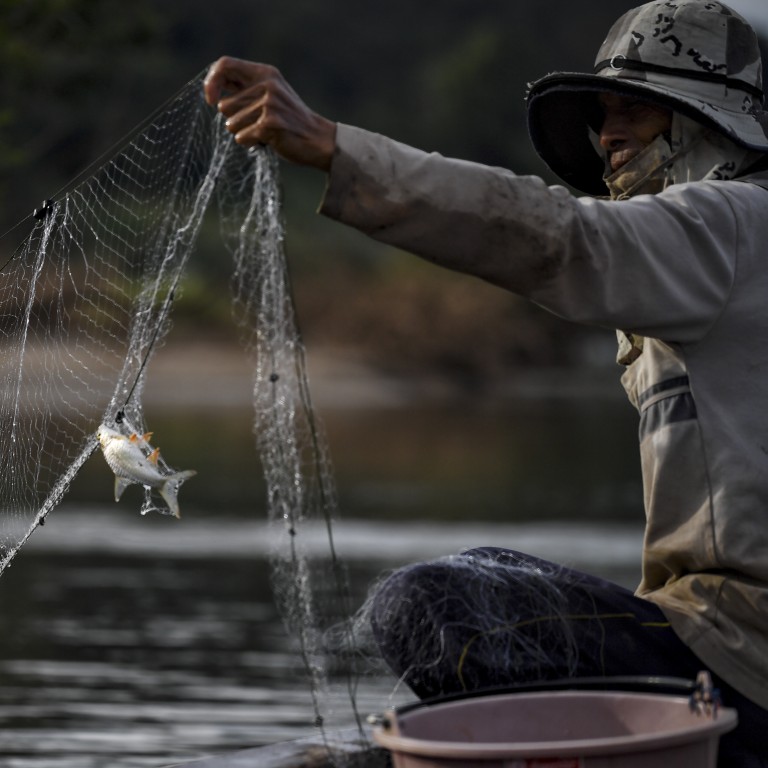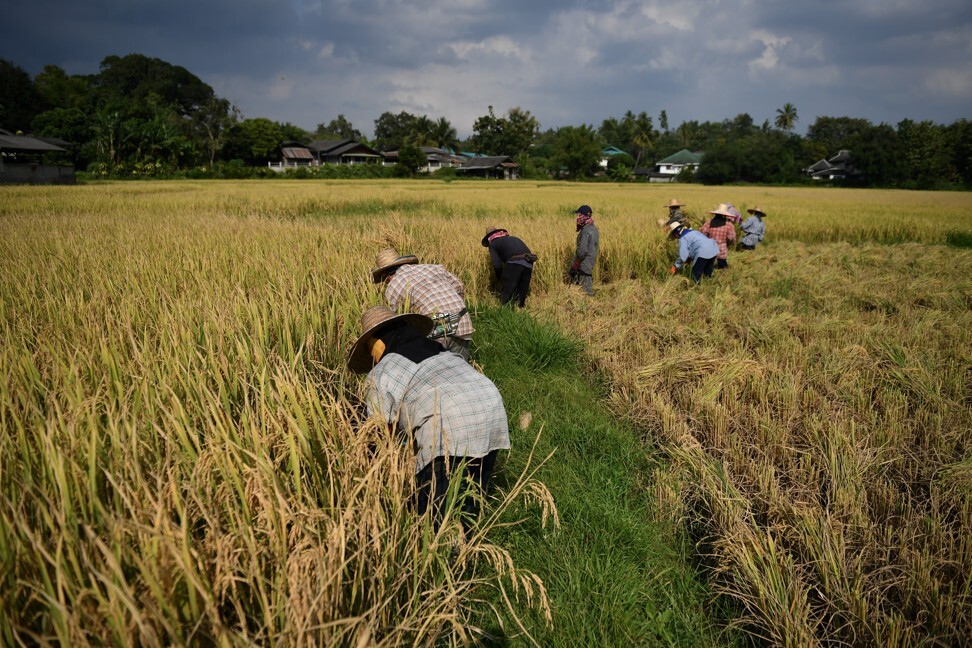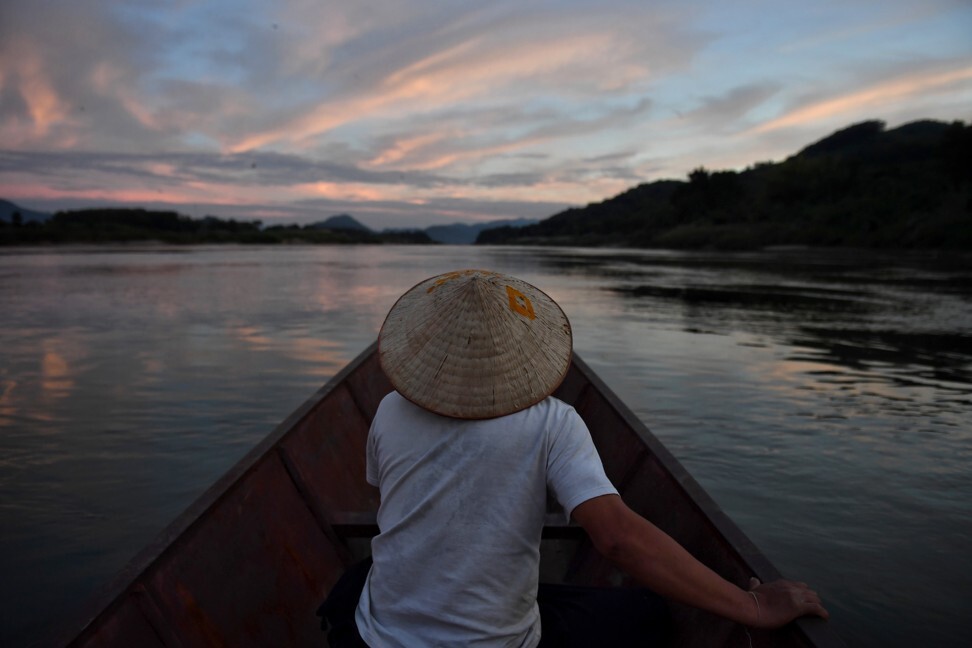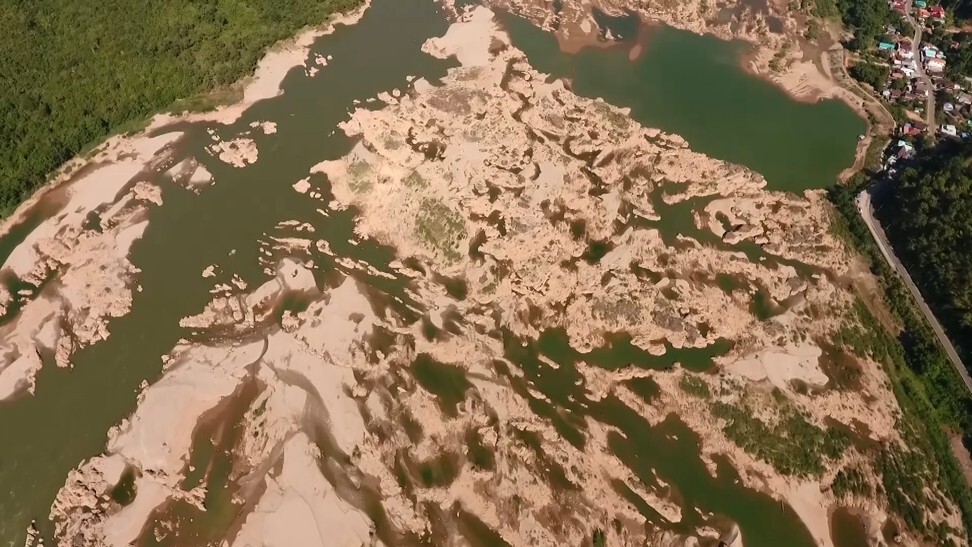
Mekong nations face growing threat to food security amid claims China’s dams exacerbate effects of drought
- Drought, erratic water levels along 4,300km river are disrupting rice yields and fish catches, raising costs for farmers
- Beijing rejects claim Chinese dams behind drought hitting countries downstream
Fishermen in northeast Thailand say they have seen catches in the Mekong River plunge, while some farmers in Vietnam and Cambodia are leaving for jobs in cities as harvests of rice and other crops shrink.
The common thread driving these events is erratic water levels in Asia’s third longest waterway.
Water flows along the 4,300km (2,700 mile) Mekong shift naturally between monsoon and dry seasons, but non-governmental groups say the 11 hydroelectric dams on China’s portion of the river – five of them starting operation since 2017 – have disrupted seasonal rhythms. This threatens food security for the more than 60 million people in the Lower Mekong that rely on the river for a livelihood, they say.
“Naturally, Mekong water rises and decreases slowly about three to four months from highest to lowest levels,” said Teerapong Pomun, director of the Mekong Community Institute, an NGO focused on water resource management and based in Chiang Mai, Thailand.
“[But now] the water levels fluctuate almost every two to three days all year, and every year, because of the dams.”
Beijing has taken issue with assessments that accused Chinese dams of causing shifts in Mekong water levels, especially a United States think tank report on April 13 that said China was withholding water upstream, citing satellite data. China said the report failed to recognise that low rainfall caused a drought in 2019, the worst to hit the region in 50 years.
“The situation in the Mekong is worrying as the prolonged drought poses dire threats to regional countries from various aspects, particularly in terms of food security,” said Zhang Hongzhou, a research fellow with Singapore’s S. Rajaratnam School of International Studies. “It will certainly adversely affect Beijing’s relations with the Mekong region countries.”
The Mekong River nourishes wetlands known as Asia’s rice bowl thanks to the high nutrient loads the river disperses. Because so many people live off and from the river, disruptions to its water levels can be devastating.
“Farm crop yields decrease, animals die, which has a huge impact on the livelihood of people as their life depends on natural resources,” said Bunleap Leang, the executive director of 3S Rivers Protection Network, an NGO that works to support dam-affected communities in northeastern Cambodia.

In April, the US Department of Agriculture forecast that 2020 rice yields in Vietnam would fall by 3.3 per cent from the previous estimates because of the drought and subsequent saltwater intrusion, leaving the harvest 0.9 per cent lower for the year.
Farmers are especially hard hit because when the water level falls, they have to buy more fuel for water pumps so their costs increase at the worst time, Pomun said. This is driving farmers from their rice fields to find other work, while Thai fishermen on the Mekong are pulling in empty nets, he said.
Besides the impact on agriculture, the Mekong and its tributaries make up the largest freshwater fishery in the world and catches are a mainstay of the diet for local people. Fish account for as much as 82 per cent of animal protein consumed locally, according to a report by the Mekong River Commission (MRC), an intergovernmental organisation representing Laos, Cambodia, Vietnam and Thailand.
The inland fisheries of the Mekong basin are a “lifeline” for the people of the region, said the MRC on its website, which warns of “severe” consequences from disruption to the catch, especially as the population of the Lower Mekong is estimated to rise to 100 million people by 2025 from the current 60 million.

Those consequences are already arriving, according to a 2018 report by the MRC, which was updated in January last year.
“Fisheries production is expected to decline substantially upstream because of the hydropower dams and their impacts on migration, habitats and primary production,” it said.
The report looked at different scenarios for fisheries based on water resource projects going out decades. It forecast a possible 40 per cent drop in fish catches through 2020 and as much as 80 per cent less by 2040.
The report shows that as populations are forecast to increase along the Mekong, fish stocks are likely to collapse through a combination of the dams, illegal fishing prompted by shortages, and climate change.
Chinese power along Mekong River pits commerce against conservation
In Cambodia, fish catches have plunged in Tonle Sap Lake, Southeast Asia’s largest inland lake that inflates in size with Mekong seasonal flows. The MRC report expected Tonle Sap annual average fish production to fall from 350,000 to 260,000 tonnes by 2020, and to 200,000 tonnes by 2040.
China’s dam-building ambitions on the river, which originates in the Tibetan Plateau and is known as the Lancang in Chinese territory, can be traced back to the 1950s, when engineers conducted surveys of the river in Yunnan province in southwest China.
From the 1980s, China ramped up hydroelectric dam construction on rivers to meet growing power demand as its economy began a blistering period of growth, eventually to unseat Japan in 2010 as the world’s second-largest economy. A total of 14 dams were envisioned for the Lancang and 11 are now in operation with others planned or under construction.

China also exported its hydropower know-how to developing countries further down the Mekong, especially Laos and Cambodia, where Chinese companies financed and built a number of projects. They include the Nam Ou 1 Hydropower Dam about 40km upstream from the city of Luang Prabang in Laos and the Lower Sesan 2, the biggest in Cambodia.
The damming of the Mekong in recent decades has generated repeated concerns about environmental damage, social upheaval and the value of the economic trade-off.
Citing these findings, Brian Eyler, Southeast Asia programme director of the Stimson Centre, a Washington-based think tank, said China’s dams had effectively “turned off the tap on the Mekong River”.
China and the MRC contested these findings, with Beijing saying it was unjustified to blame its dams for the drought.
In a statement on April 21, the MRC said “more scientific evidence was necessary to conclude that the 2019 drought was in large part caused by water storage in Upper Mekong dams.” It added that water flows “from China were higher than normal for the 2019 and 2020 dry seasons”.
The Mekong body said that while upstream dams had altered seasonal flows of the river, the drought was “due largely to very low rainfall during the wet season with a delayed arrival and earlier departure of monsoon rains, and an El Nino event”.
However, the commission said that more sharing of data and transparency was needed between the four members and its so-called dialogue partners, China and Myanmar.
“A transparent data-sharing arrangement on how water and related infrastructures are operated will help everyone manage risks and avoid misperception,” Dr An Pich Hatda, the MRC secretariat’s chief executive officer, said in the statement.

Harris Zainul, an analyst with the Institute of Strategic and International Studies in Malaysia, said the coronavirus pandemic could become a factor in the Mekong water disputes. Covid-19 has prompted lockdowns in many countries, which can block farmers from getting food to markets.
“If this were to happen, then countries, including those downstream of the Mekong, would be more sensitive towards the adverse effects arising out of lower water levels on the Mekong,” Harris said, adding that it could cause a public backlash against China in Mekong nations and prompt demands for action.
Beijing has said it works with downstream nations on water management through the Lancang-Mekong Cooperation (LMC) established in 2015 by China, Myanmar, Laos, Cambodia, Thailand and Vietnam. China is the largest trading partner for the Mekong members.
At an LMC summit in February, Chinese Foreign Minister Wang Yi told his counterparts from the five Mekong states that Beijing had increased water outflows from the Lancang to mitigate the drought in the Mekong region.
Thailand nixed China’s Mekong blasting project. Will others push back?
China had suffered, too, he said. In Yunnan province, the local government said the region was hit by the worst drought in a decade, with average rainfall dropping 18 per cent.
Pomun said part of the problem was a lack of transparency and cooperation from China, and that downstream villagers were often caught off guard by an unexpected release of water from China’s dams. When water was released without warning, crops on the riverbanks became flooded, he said.
“That is why we ask for transparency as we need to find out how much per cent of the drought is caused by the dams and how much is caused by climate change.”
Pomun said he was worried the coronavirus pandemic might worsen the situation as countries turned inward to protect their own natural resources.
People would “keep the water to themselves more, to produce electricity for the economy, for their own country”, he said.

